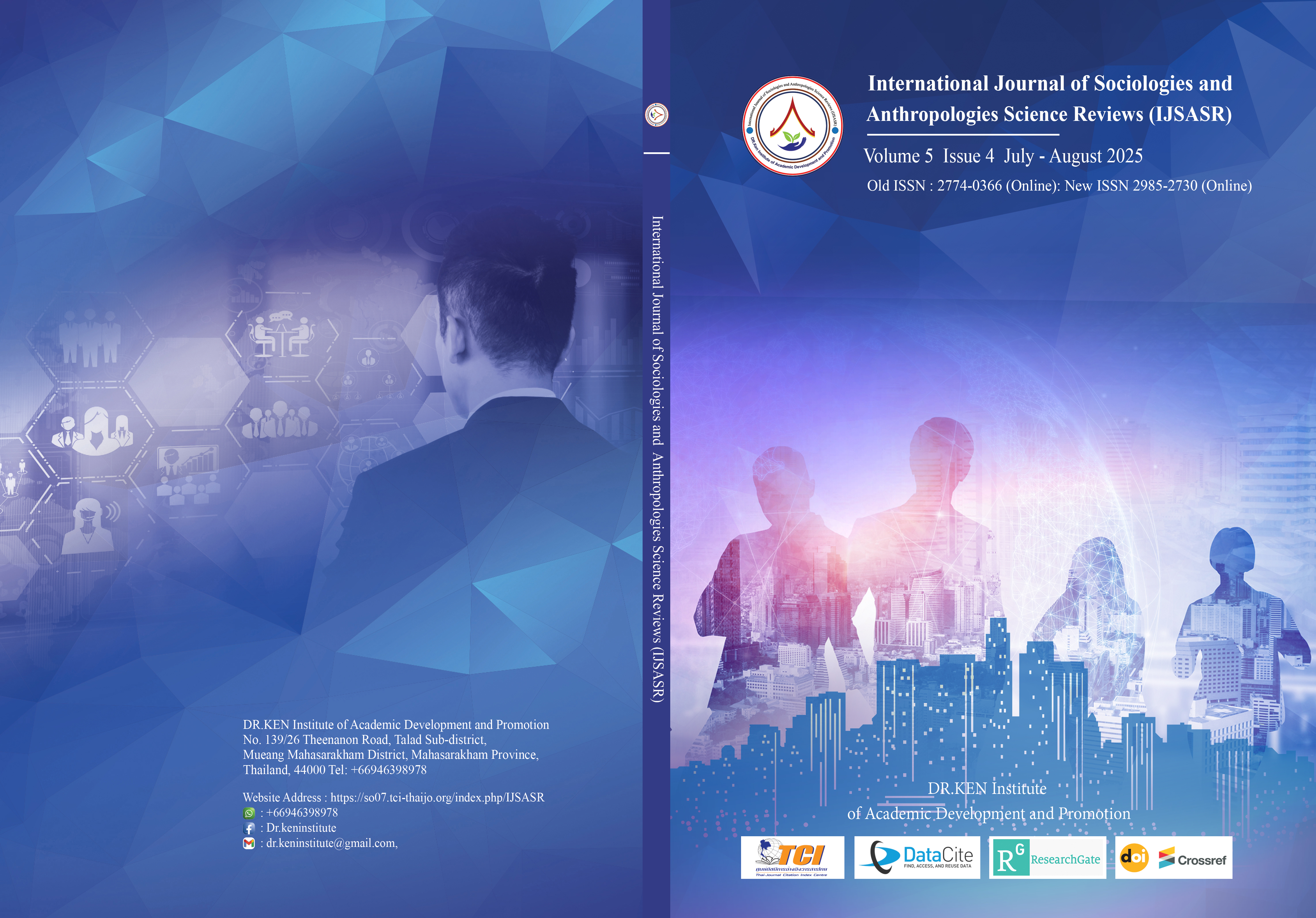The Cultural Creative Path of Intangible Cultural Heritage: A Study on the Cultural Inheritance of Yingge Masks and Their Integration into Modern Cultural and Creative Design
Main Article Content
Abstract
Background and Aim: This study explores the application of Chaoshan Yingge facial makeup culture in modern cultural and creative product design, aiming to investigate how to achieve the cultural inheritance and innovation of Yingge facial makeup by integrating traditional culture with modern design.
Materials and Methods: The study shows that, as an important local cultural symbol, Chaoshan Yingge facial makeup has great potential in cultural and creative product design. In the design process, it is necessary not only to retain the essence of traditional culture but also to combine modern design elements so that it has both historical and cultural depth and conforms to modern aesthetics and market demand. This study also explores the balance between the inheritance of traditional culture and commercialization, providing feasible design pathways for the future development of Yingge culture.
Results: The results of this study offer a new perspective for the protection and innovation of intangible cultural heritage, especially in the cultural and creative industries, and can promote the protection, inheritance, and marketization of Yingge dance and its related facial makeup culture. Meanwhile, the research findings have important guiding significance for the design and innovative practice of cultural and creative products of intangible cultural heritage.
Conclusion: It is suggested that policymakers pay more attention to the integration with creative industries in cultural heritage protection to promote the continuous inheritance and development of traditional culture.
Article Details

This work is licensed under a Creative Commons Attribution-NonCommercial-NoDerivatives 4.0 International License.
Copyright on any article in the International Journal of Sociologies and Anthropologies Science Reviews is retained by the author(s) under the under the Creative Commons Attribution-NonCommercial-NoDerivatives 4.0 International License. Permission to use text, content, images, etc. of publication. Any user to read, download, copy, distribute, print, search, or link to the full texts of articles, crawl them for indexing, pass them as data to software, or use them for any other lawful purpose. But do not use it for commercial use or with the intent to benefit any business.

References
Chen, H. (2024). Performance of Yingge [Photograph]. Yingge performance venue, Haojiang District, Shantou City, Guangdong Province, China.
Chen, Z. K. (2017). “Portable culture”: Definition, classification, and the “3C resonance principle” of cultural and creative products. Modern Communication, 2, 103–105.
Cong, L. (2020). Application of semiotic principles in graphic design. Drama House, 10, 118–119.
Ding, J. (2021). Application of traditional graphics in graphic design under the background of design semiotics. Footwear Craft and Design, 13, 16–17.
Gunnar, A. (2024, September 12). Innovative practices in cultural and creative design of intangible cultural heritage. Spiritual Civilization Newspaper, B02. https://doi.org/10.28476/n.cnki.njswm.2024.000537
Jin, X. W. (2024). A preliminary study on the design of digital nomad office spaces from the perspective of place identity. Footwear Craft and Design, 14, 44–48.
Lei, J. (2022). The application of Chaozhou Yingge dance character elements in cultural and creative product design. Tomorrow's Fashion, 24, 116–119.
Li, Y. B., Zhou, Y., & Han, W. G. (2024). Research on the innovative design of cultural and creative products from a semiotic perspective. China Packaging, 7, 86–90.
Malinowski, B. (1987). A theory of culture (X. Fei, Trans.). China Folk Literature and Art Publishing House. (Original work published in English)
Collins-Kreiner, N., & Zins, Y. (2011). Tourists and souvenirs: Changes through time, space, and meaning. Journal of Heritage Tourism, 6(1), 2–6. https://doi.org/10.1080/1743873X.2010.515312
Wei, F. (1990). The variant forms of the Nu culture in Chaoshan. Journal of Shantou University, 2, 1–5.
Xiang, S. (2023). Research on the changes in the cultural functions of contemporary Chaoyang Yingge (Master’s thesis, South China University of Technology).
Xiao, K., Lin, N., & Chen, Z. (2022). The current situation and development strategies of Yingge dance inheritance and innovation from the perspective of cultural communication. Cultural Innovation Comparative Research, 28, 113–117.
Xu, L. P. (2018). The application of regional cultural symbols in cultural and creative product design based on psychological resonance strategies. Enterprise Economy, 12, 109–114. https://doi.org/10.13529/j.cnki.enterprise.economy.2018.12.015
Yang, Y. (2014). Field investigation and research on "Chaoyang Yingge" in Guangdong (Master’s thesis, China Academy of Art). (Unavailable link)
Zhu, S. S., & Luo, S. J. (2013). Reconstruction of cultural relic elements in product design based on design semiotics. Journal of Zhejiang University (Engineering Edition), 11, 2065–2072.






